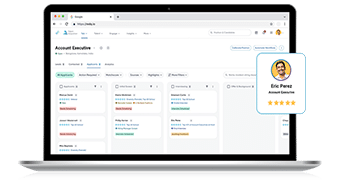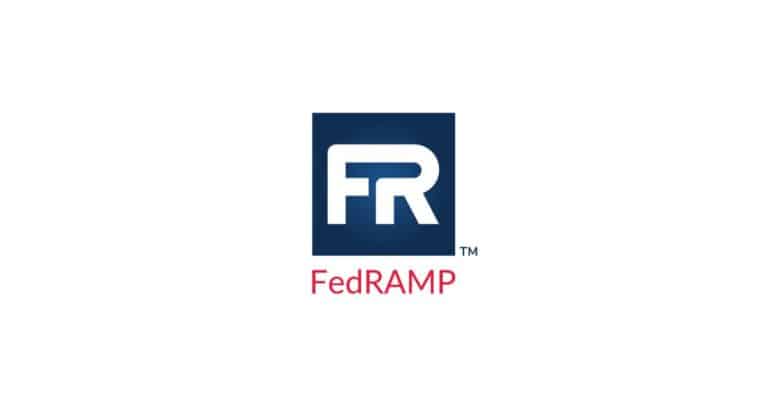- Encouraging internal mobility engages employees, allowing them to forge fulfilling and versatile careers
- Talent teams can support workers in identifying new roles and projects through technology and transparency.
- When businesses connect individuals with new opportunities, they’re building stronger, more agile teams who already understand the organization’s mission and culture.
We could all use a career navigator, a personal assistant who updates our skills and reveals opportunities that are good fits for our professions and growth.
The good news is that this is already a reality. We’ve taken this concept to the next level with our technology, aptly named Career Navigator.
Our AI is a game-changer, identifying not just career paths, but also adjacent career paths, job openings, learning opportunities, volunteer opportunities, projects, and more within an organization. This encourages and enhances lifelong development and mobility for employees, while also helping talent teams identify the best fit for open roles.
At the same time, the technology fosters collaboration by helping talent teams tune into who has what skills and might be a good fit for an open role. For all parties, this creates a sense of unity and shared success.
Internal mobility is a hot topic in HR these days and for good reason. When employees know they have opportunities to learn and grow within an enterprise, they are more likely to stay longer, leading to a promising and fulfilling career. When businesses are able to move people into new and different areas, they’re building stronger, more agile teams that understand the company’s mission and culture and already have a proven track record.
Recently, Jason Cerrato, Vice President, Talent-centered Transformation at Eightfold AI, joined a panel on internal mobility in which HR leaders discussed how businesses are retaining their best and brightest workers by focusing on skills and growth, rather than simply trying to fill open job listings.
Here are five ways they’re doing that.

Related content: See how Career Navigator, a career development platform from the Josh Bersin Academy using our skills intelligence, can help you take your HR career to the next level.
1. They’ve created a culture of exploration and opportunity.
HR teams help build culture, but they are also a product of that culture.
Alexandra Kiniry, Regional Head of Talent Acquisition at Henkel, started working at the company 22 years ago and has held several roles in engineering, sales, and global market development.
About a decade ago, small children and family obligations made business travel too consuming for Kiniry, so she approached HR for better life balance. “They were like, ‘Don’t leave, we’ll figure this out,’” she said.
They found her a role in strategic pricing, which fit well with her interests and life. In time, a position in HR opened up, allowing her to continue growing. Today, through that HR role, Kiniry loves looking for opportunities for her colleagues like the talent team did for her.
“You really can look at your employees and find transferable skill sets, things that really drive them, and they can be applied to totally different areas in the company, which has been great,” she said.
As Kiniry’s experience shows, one rule of internal mobility is that it’s a joint effort: employees must be open to new opportunities, and so must HR.
That’s the case at Revvity, where Anne Feeley is Global Talent Success Leader. “It’s definitely a shared responsibility,” she said. “We empower employees to own their careers, to ask questions, raise their hands, and say, ‘I’m interested.’”
Feeley says the company places great importance on the annual talent review process, discussing opportunities and goals with team members, and tracking progress throughout the year. “While we say employees own their own development and everyone is encouraged, we also have a really targeted approach to talk about it,” she said.
2. They’re using tech to track skills and mobilize employees.
Managers have a common fear about internal-hiring practices. They worry they’ll lose capable workers to another department and have no replacements.
An agile business can assuage those fears with the right technology in place. For example, our platform gives talent teams the ability to create a regenerative system so when one employee is moved into a new role, there’s also a readiness plan for other individuals to possibly replace that person.
At Revvity, the HR team continually asks employees to update their skills in a database and encourages managers to assess their teams’ skills. When a position opens, the HR team turns to that database to see if they have any employees who are a match.
“We send emails to those people saying, ‘Hey, a job opened and it matches the skills you have.’” Feeley said. “Or, ‘You said you want to grow in this, here’s an opportunity.’”
Related content: Shardé Marchewski, Global Head of DEI at Wayfair, shares how their internal mobility approach is elevating their talent from within.
3. They understand that internal mobility can support finding hidden talent.
Why risk losing an employee who likes everything about their organization except their current responsibilities? At Wayfair, employees are encouraged to explore other roles—an approach that the team playfully refers to as the “career jungle gym.”
Shardé Marchewski, Global Head of DEI at Wayfair, says that when team members understand they don’t have to leave the company to try something new, it can help retain talent.
“It isn’t uncommon to be able to hop around,” she said. Marchewski has found ways to ‘play’ in the career jungle gym. She started in marketing and now oversees the company’s commercial and employee diversity strategies.
To encourage team members to explore new and different job opportunities, Wayfair recently launched a “mobility pool,” where anyone can opt in to receive notifications when a position opens that matches their skills.
The results have been promising, particularly among employees with diverse backgrounds, says Marchewski.
“It allows us to really offer more folks equal shots of these careers,” she said. “Most of the placements have been with women and underrepresented groups so far, and so we think that it’s a great way to continue to really expand our diversity and make sure that we’re keeping diverse talent there and also giving them opportunities to grow as well.”
4. They also understand the importance of engaging employees who want to stay put.
Not everyone is interested in hopping around to different jobs. It’s not uncommon to work among long-time employees who are perfectly happy in their roles and have no desire to try something new.
HR teams should consider offering a variety of opportunities to those team members to help them feel energized and invested in their work.
“What we try to do is engage them in other activities so they could be mentors to early talent coming in or new people into the department,” Kiniry said. “They have the opportunity to work on special projects so that they’re being engaged in different ways than just their role that they’ve been in.”
Revvity launched “gig” opportunities within the company, which allow employees to join a skills-based project for just a few hours a week, often meeting virtually. “It’s risk-free, 12 weeks or less, only a couple hours a week,” Feeley said.
For some, a gig might be a learning opportunity; for others, it might be a teaching opportunity. She adds that it’s a collaborative endeavor that helps connect people across departments and often between different countries.
Related content: Stephanie Ricks, Director, Corporate Development and Technology Partnerships at Strategic Education, shares how her organization’s Workforce Edge has given employees access to thousands of training and educational opportunities.
5. They offer benefits that drive employees to learn and grow.
A survey by Strategic Education found that 87% of employees say skills development is important to their jobs. Yet benefits like tuition reimbursement are challenging to implement and manage. Plus, according to the Lumina Foundation, only about 2 to 5% of employees actually take advantage of the offering.
Those insights led education technology company Strategic Education to develop “Workforce Edge,” which manages education benefits and offers employees access to thousands of learning choices, ranging from GED to Ph.D. programs, along with certifications, industry-recognized credentials, training courses and programs, and more.
“[Employees] can go and look and say, ‘My company right now may not know where we’re going … but I need to own my own growth and development and reskill myself,” said Stephanie Ricks, Director, Corporate Development and Technology Partnerships with Strategic Education.
Employers who use the platform have access to dashboards that track how employees use it, who’s learning what, who’s interested in promotions, and more. Ricks says it allows HR to glean a deeper understanding of their team’s short-term and long-term goals so they can help them achieve more.
“It’s your job to create a space where employees come for a job and stay for a career,” Ricks said.
Watch the entire webinar Creating opportunity within: How employers are boosting internal mobility on demand now.










